Related Research Articles
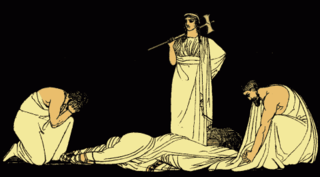
Murder is the unlawful killing of another human without justification or valid excuse, especially the unlawful killing of another human with malice aforethought. This state of mind may, depending upon the jurisdiction, distinguish murder from other forms of unlawful homicide, such as manslaughter. Manslaughter is a killing committed in the absence of malice, brought about by reasonable provocation, or diminished capacity. Involuntary manslaughter, where it is recognized, is a killing that lacks all but the most attenuated guilty intent, recklessness.
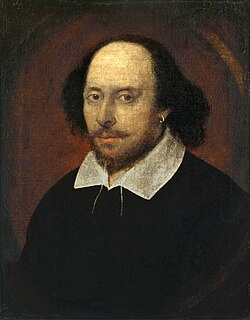
William Shakespeare was an English poet, playwright, and actor, widely regarded as the greatest writer in the English language and the world's greatest dramatist. He is often called England's national poet and the "Bard of Avon". His extant works, including collaborations, consist of some 39 plays, 154 sonnets, two long narrative poems, and a few other verses, some of uncertain authorship. His plays have been translated into every major living language and are performed more often than those of any other playwright.
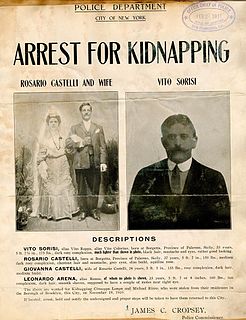
Black Hand was a type of Italian extortion racket. Originally developed in the eighteenth century, the Black Hand extortion came to the United States in the later nineteenth century with immigrants.

William Backhouse Astor Sr. was an American business magnate who inherited most of his father John Jacob Astor's fortune. He worked as a partner in his father's successful export business. His massive investment in Manhattan real estate enabled major donations to the Astor Library in the East Village, which became the New York Public Library.

Arnold Rothstein, nicknamed "the Brain", was an American racketeer, businessman and gambler who became a kingpin of the Jewish mob in New York City. Rothstein was widely reputed to have organized corruption in professional athletics, including conspiring to fix the 1919 World Series. He was also a mentor of future crime bosses Lucky Luciano, Meyer Lansky, Frank Costello and numerous others.

Roger Connor was a 19th-century Major League Baseball (MLB) player. He played for several teams, but his longest tenure was in New York, where he was responsible for the New York Gothams becoming known as the Giants. He was the player whom Babe Ruth succeeded as the all-time home run champion. Connor hit 138 home runs during his 18-year career, and his career home run record stood for 23 years after his retirement in 1897.
See also: 1879 in organized crime,

Benjamin Franklin Dillingham was a businessman and industrialist during the late Kingdom of Hawaii era, throughout the period of the Republic of Hawaii, and during the first two decades of the Territory of Hawaii.
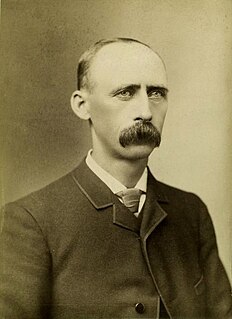
James Laurie "Deacon" White was an American baseball player who was one of the principal stars during the first two decades of the sport's professional era. The outstanding catcher of the 1870s during baseball's barehanded period, he caught more games than any other player during the decade, and was a major figure on five consecutive championship teams from 1873 to 1877 – three in the National Association (NA), in which he played throughout its five-year existence from 1871 to 1875, and two in the National League (NL), which was formed as the first fully recognized major league in 1876, partially as a result of White and three other stars moving from the powerhouse Boston Red Stockings to the Chicago White Stockings. Although he was already 28 when the NL was established, White played 15 seasons in the major leagues, completing a 23-year career at the top levels of the sport.

Arthur H. Soden was an American executive in Major League Baseball who was the president/owner of the Boston Base Ball Club of the National League and a Civil War veteran.
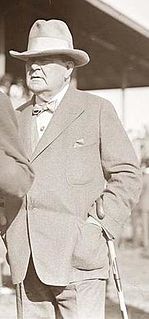
James Buchanan Brady, also known as Diamond Jim Brady, was an American businessman, financier and philanthropist of the Gilded Age.
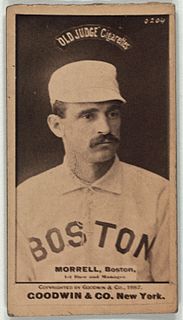
John Francis Morrill, nicknamed "Honest John", was an American first baseman and manager in Major League Baseball who played from 1876 to 1890. Over the years he played all positions. Although he pitched a couple of games each season, he was primarily an infielder, and had a career batting average of .260. In an incredible season in 1883, he batted .316, played six different positions, and led the Boston Beaneaters to the National League pennant after taking over as manager from Jack Burdock in midseason.

James Sidney Edouard, Baron Ensor was a Belgian painter and printmaker, an important influence on expressionism and surrealism who lived in Ostend for almost his entire life. He was associated with the artistic group Les XX.

Marathon Man is a 1976 American suspense-thriller film directed by John Schlesinger. It was adapted by William Goldman from his 1974 novel of the same title and stars Dustin Hoffman, Laurence Olivier, Roy Scheider, William Devane and Marthe Keller. In the film, "Babe" Levy, a graduate student (Hoffman), becomes embroiled in a plot by Nazi war criminal Christian Szell (Olivier) to retrieve stolen diamonds from a safety deposit box owned by Szell's dead brother. Babe becomes unwittingly involved due to his brother, Doc's, dealings with Szell.
Harry Hill was an English-born American businessman, sportsman and saloonkeeper whose establishments were regular meeting places for sportsmen, gamblers and politicians as well as members of the criminal underworld of New York City during the late 19th century. The most famous of these was his Bowery gambling resort located on West Houston Street east of Broadway and was long considered "one of the sights of the metropolis" from the 1850s until its close in 1886.

Sophie Lyons was an American criminal and one of the country's most notorious female thieves, pickpockets, shoplifters, and confidence women during the mid-to-late 19th century. She and her husbands Ned Lyons and Billy Burke were among the most sought-after career criminals in the U.S. and Canada, being wanted in several major cities including Philadelphia, Boston, and Montreal from the 1860s until the turn of the 20th century.
Ephraim Snow or Old Snow was an American criminal fence and underworld figure on New York City during the early-to mid-19th century. He was one of the first major fences in New York and the main competitor of Joe Erich during the 1850s and 60s, however the two had a far more friendly and cooperative relationship then the fierce rivalries of later fences such as John D. "Traveling Mike" Grady and Fredericka "Marm" Mandelbaum. He operated from a small dry goods store on the corner of Grand and Allen Streets, only a short distance from Erich's establishment in Maiden Lane, and was well known as a dealer in "stolen property of every description". According to underworld lore, Erich once disposed of a flock of sheep that some Bowery thugs brought back with them while on vacation in Upstate New York having stolen them from a farm in Westchester County and herded them "through the streets of the city to the shop of the fence".

William O'Brien, better known as Billy Porter but also known by the alias William or Billy Morton, was an American burglar and underworld figure in New York City during the mid-to late 19th century. He and partner Johnny Irving were longtime members of the Dutch Mob along with Little Freddie and Michael "Sheeny Mike" Kurtz. He was present during the 1883 gunfight at Shang Draper's saloon in which Irving was shot and killed by rival John "Johnny the Mick" Walsh. O'Brien then killed Walsh and was himself gunned down by Shang Draper. Although surviving his wounds, he was tried for, and acquitted of, Walsh's death.
The Hon and Very Rev Augustus Duncombe, DD was Dean of York from 1858 until his death.

Thomas Francis Grady was an American lawyer and politician from New York.
References
- Banker Of The Burglars; Death Of John D. Grady, Receiver Of Stolen Goods. New York Times. 4 October 1880